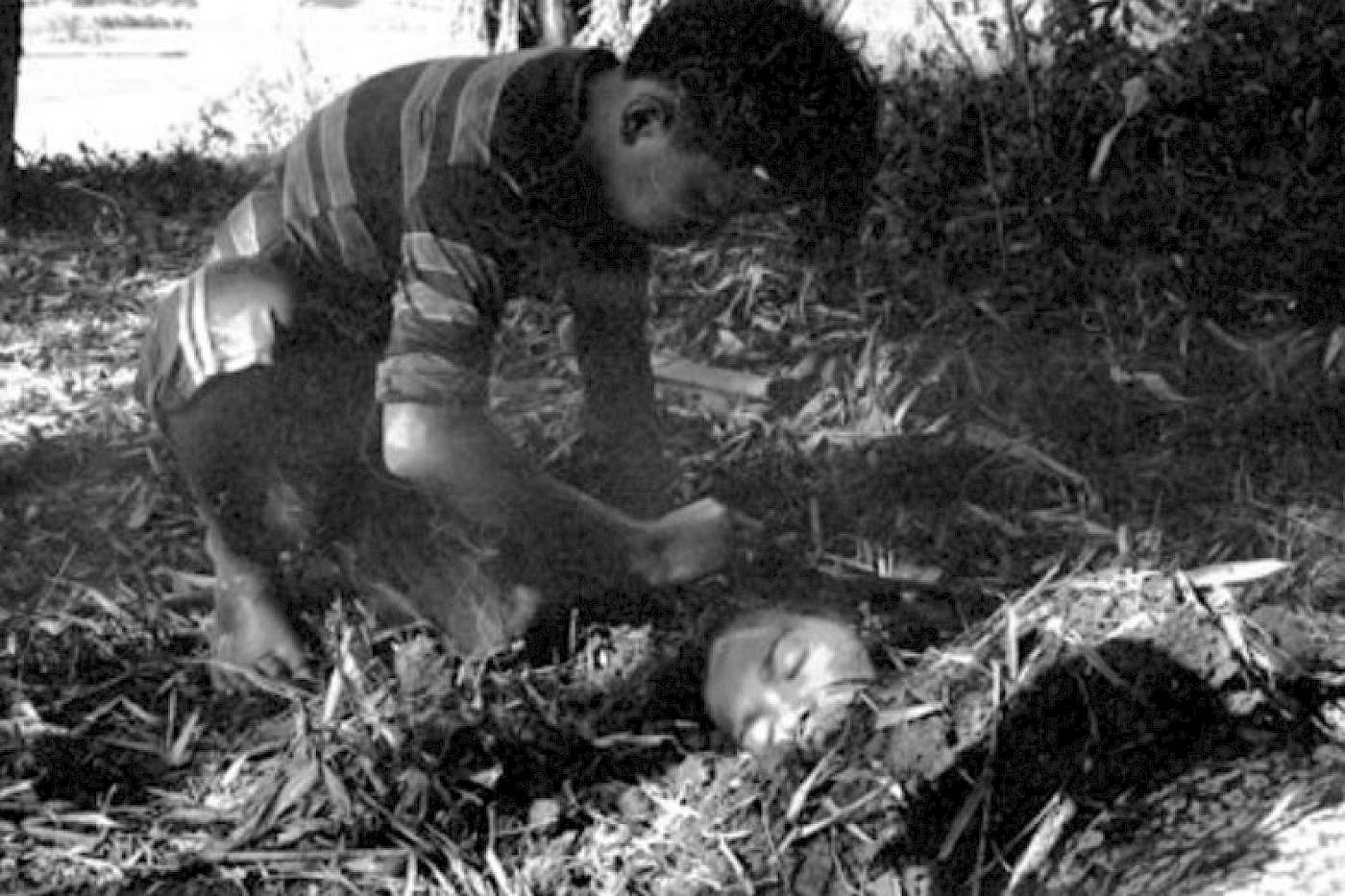Several years back, in a small cinema in Turin on the same road where Nietzsche embraced a flayed horse, an ordinary “working day” spent watching Ebolusyon ng Isang Pamilyang Pilipino, the quotidian saga Lav Diaz took over 10 years to film, putting his life at risk for cinema, losing his wife because of his “stubborn-ness”, and seeing three of his main actors die during the film’s long and arduous shoot. One of the leading actors at some point said to him: “Take care of me in the film.” (Only later did he understand why he had said this). Present at the screening were myself, Graeme, a somewhat disheveled guy with fanatical eyes, vaguely reminiscent of Jean Pierre Léaud’s dandy accomplice in La maman et la putain - a militant critic who would become a close friend - along with a few other sporadic festival-goers who came and went during the film’s 11 hour plus running time, in between other films on their list. For the last few hours there was Lav himself, slouched in an aisle seat a little ill at ease, sipping his coffee. During each of the five-minute intervals, journalists would suddenly appear on the scene with concerned looks on their faces to ask us how we were bearing up, as though we had embarked on some test of masochistic endurance or were trapped in a mineshaft awaiting rescue.
A film that took more than 10 years to make - what Diaz was asking was a mere 11 hours of our no-doubt valuable time to watch it. The length of an average working day, the same day most accept to live over and over again without overt complaint, the duration of a transatlantic flight spent in the dispiriting company of a series of bad movies.
Yet passing the best part of a day with Diaz’s Philipino family was something that warranted media attention, far more than the film itself apparently did, despite our protests to the contrary. Yes it was sad in some ways that each of us could lord it over a fiefdom of four rows of seats, but with that feeling came the inverse thrill of the discovery of terra incognita and the secret wish that the ‘missing people’ often evoked in relation to ‘minor cinema’ would continue to ignore its call.
Meaning that as we watched, flashing in our brains somewhere was a neon message-board traversed by the legend “a completely new dimension in cinematic experience”, the dumbstruck synthesis of scene after scene that stretched almost to breaking point what cinema, or the cinema we knew, was capable of conveying about human life on the vaster portions of this planet as it is lived, borne, betrayed, squandered, enjoyed, violated, lost.
The mental messages that accompanied our sensations may have been similar to the hyperbole of the average Hollywood trailer or poster campaign but here the hype was in no way coercive or pre-emptive. This was a real ‘trailer’, in the contrary sense, being composed of what will remain, the drag of future memory that trails you all your life.
Like the scene two-thirds of the way through the film in which the rebel leader, after being knifed by local thugs, is tracked by the camera for an agonizing twenty minutes as he staggers through Manila’s backstreets looking for a place to die.
We were in the fullest sense of the word with him on his long and agonizing journey, and we were so because we had been given the time to be drawn into the character’s life - and death. Looking for the right place to die, of course takes time, as well as an incredible will to live. But indeed there is a joy that comes from such lessons, one that owes itself in part to the sense that they are offered by the filmmaker as a gift, a chance to share what he, his cast and crew have given over a sizable chunk of their own lives - and even more than that - to creating.
And to the missing people, in an interview published in Sense of Cinema, Lav Diaz says: “If you cannot sit through ten hours this time, I WILL WAIT FOR YOU. Maybe ten years from now you can watch it. I will wait for that. Art can wait. There is no rush. We cannot rush. ‘Ebolusyon’ will always be there. Ten years from now, 50 years from now, people will be watching. People will be able to catch up. They are very capable of that. I was accused of being so stubborn. But that is the truth. Art must be stubborn.”
JLG himself once wrote: “Faire un film, c’est renoncer à tout”. We too felt this bizarre need, somehow, for a couple of years, making our last film. We were almost possessed. We would do anything to follow the filmic matter, which was constantly demanding, constantly imposing, overwhelming.
Is this something approximate to joy? Losing everything, your partner, your friends, your actors, your crew, your sense of self. Is this joy? The empty cinema, the desertion, the awkwardness, the misunderstandings. Perhaps it is. Plus a lot of affliction.
Silvia Maglioni
